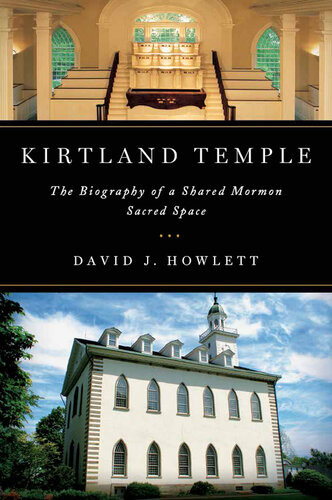

Most ebook files are in PDF format, so you can easily read them using various software such as Foxit Reader or directly on the Google Chrome browser.
Some ebook files are released by publishers in other formats such as .awz, .mobi, .epub, .fb2, etc. You may need to install specific software to read these formats on mobile/PC, such as Calibre.
Please read the tutorial at this link: https://ebookbell.com/faq
We offer FREE conversion to the popular formats you request; however, this may take some time. Therefore, right after payment, please email us, and we will try to provide the service as quickly as possible.
For some exceptional file formats or broken links (if any), please refrain from opening any disputes. Instead, email us first, and we will try to assist within a maximum of 6 hours.
EbookBell Team

4.8
34 reviewsThe only temple completed by Mormonism's founder, Joseph Smith Jr., the Kirtland Temple in Kirtland, Ohio, receives 30,000 Mormon pilgrims every year. Though the site is sacred to all Mormons, the temple's religious significance and the space itself are contested by rival Mormon dominations: its owner, the relatively liberal Community of Christ, and the larger Church of Jesus Christ of Latter-day Saints.
David J. Howlett sets the biography of Kirtland Temple against the backdrop of religious rivalry. The two sides have long contested the temple's ownership, purpose, and significance in both the courts and Mormon literature. Yet members of each denomination have occasionally cooperated to establish periods of co-worship, host joint tours, and create friendships. Howlett uses the temple to build a model for understanding what he calls parallel pilgrimage—the set of dynamics of disagreement and alliance by religious rivals at a shared sacred site. At the same time, he illuminates social and intellectual changes in the two main branches of Mormonism since the 1830s, providing a much-needed history of the lesser-known Community of Christ.|
Cover
Title
Contents
List of Illustrations
Acknowledgments
Introduction. The Kirtland Temple as a Parallel Pilgrimage
Part I: Pattern and Preparation
1. A "House of the Lord" in Kirtland, 1831–1844
2. Splintered Saints and the Temple, 1844–1900
3. Reforming Identities, Reframing Pilgrimage, 1900–1965
Part 2. Proximity
4. Creating a Cursed and Sanctified Temple, 1965–1984
5. The Destroyer and the Peacemakers, 1984–1990
6. New Shrines and New Capital, 1990–2012
Part 3. Performance
7. Staging the Temple, 1972–2012
8. Tour Guiding, 1959–2012
9. Dealing with Diversity, 1965–2012
Conclusion: Parallel Pilgrimages, Parallel Temples
Appendix: Theorizing Pilgrimage
Notes
Index|
Best First Book Award, Mormon History Association, 2015. Smith-Pettit Best Book Award, John Whitmer Historical Association, 2015.
— Mormon History Association
Best First Book Award, Mormon History Association, 2015. Smith-Pettit Best Book Award, John Whitmer Historical Association, 2015.
— John Whitmer Historical Association
|
David J. Howlett is a visiting assistant professor of religion at Skidmore College.